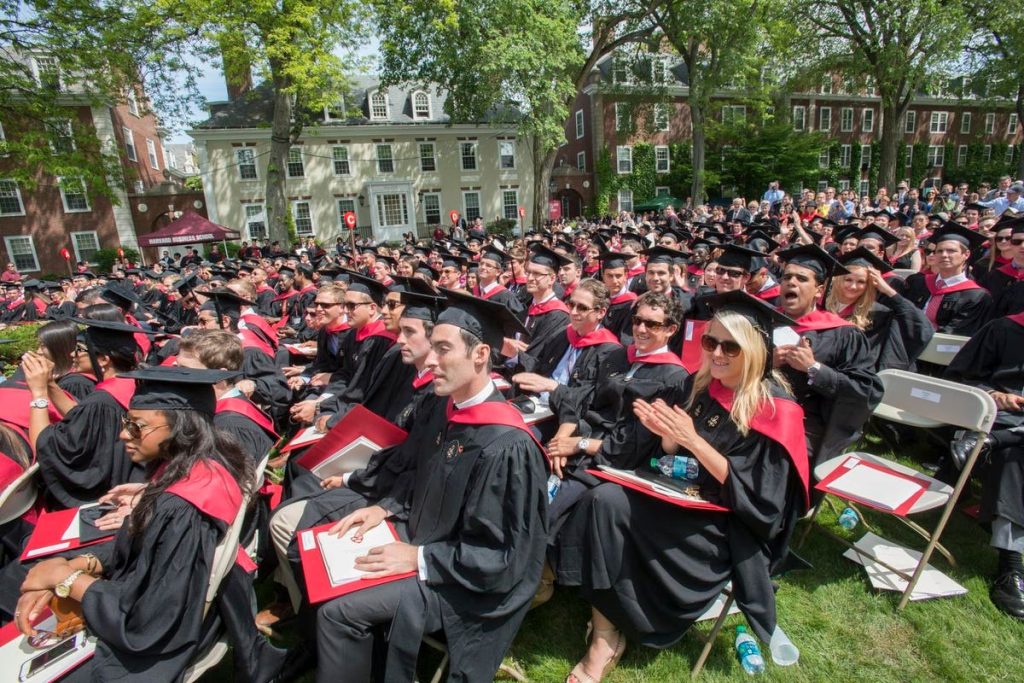Most of the discussion of student loan debt has revolved around undergraduate education, but over 40% of student loan debt is graduate school debt, despite enrolling only 15% of borrowers. In 2006, A graduate PLUS loan was created. The previous limit for a direct unsubsidized loan was $20,500. As long as a master’s degree is accredited, students can take out a federal PLUS loan for the entire cost of tuition, fees, books and living expenses, with no limit on what the college can charge.
The effects have been dramatic. From 2001 to 2016, the percentage of graduate students with over $80,000 in student debt went from 1.4% to 11%. Master’s degree debt has become particularly burdensome. A report from the Education Data Initiative found that the total debt load of those borrowing for masters programs, over 60% of total attendees, to be over $80,000, with $65,000 from their masters programs. This is an increase of 113% since 2000.
What also makes masters programs different from undergraduate school is the lack of data reporting. One example, quoted in a Huff Post article, notes that “The University of Pennsylvania offers a master’s in ‘Applied Positive Psychology,’ which is essentially a $66,000 Ivy League degree that has ‘no specific prerequisite courses’ and applications are accepted from anyone with a minimum 3.0 grade point average.” Columbia University’s master’s degree in film and video graduates typically earn about $28,000 annually but have debt of almost $164,000.
This is at a time when the value of a master’s degree has significantly waned. “The earnings premium for graduate degrees has stagnated or decreased,” said higher education expert Mark Kantrowitz. The Biden administration agreed, stating that “There is generally very little correspondence between the amount students borrow to finance their advanced degrees and their labor market outcomes,” Robert Farrington, writing for Forbes, notes that “a 2022 report from FREOPP studied the return-on-investment of 14,000 different graduate degree programs and “discovered that 40% of graduate degree programs have no net value at all” and “14% of advanced degrees and 40% of master’s degrees have a negative financial return.”
Michael Itzkowitz, the former director of the Department of Education’s College Scorecard, founded the HEA Group and Student Defense, a nonprofit that advocates for students’ rights. They found that one-third of graduate schools leave their alumni with unsustainable debt. Among the 1,661 institutions they analyzed, students at 528, or 32%, owed more on their loans five years after graduation than they had first borrowed. “The worst offenders are for-profit and private non-profit institutions.”
The interest terms on federal graduate loans are worse than for undergraduate debts. The interest rate for Grad PLUS loans is 2.55 percentage points higher than that on undergraduate loans. Grad PLUS loans also come with an origination fee of more than 4 percent. A Congressional Budget Office (CBO) report found that graduate borrowers not only have larger loan balances than undergrads, but they are also more likely to enroll in income-driven repayment (IDR) plans. This means that even if the payments are being made, the balance that a student owes can continue to rise.
On-line education has exponentially increased the problem. A 1988 reform by the Education Department to encourage on-line learning allowed any accredited college to apply this accreditation to any of their on-line programs as well. One example in the Huff Post article is Concordia University, a small Lutheran college in Chicago. It engaged an OPM, an online program management firm called HotChalk to “recruit, hire, supervise and manage” programs that were supposedly offered by Concordia. They became the largest on-line masters program in the country, with over 6000 students, and 80% of the revenue flowing to HotChalk. Other popular programs like Grand Canyon University’s have similarly high profits going to the institutions and their OPM’s.
One estimate is that only 15% of the cost of on-line education is for instruction, with the bulk of the cost in marketing, advertising, sales, ads and administration making up the rest. Georgia Tech, ranked in the top 10 in computer science, decided to offer an on-line program at their cost. The cost was $6,600, about one eighth the cost of private college programs from schools like USC and Columbia. Despite having costs substantially lower costs than on-campus programs, many of these programs charged the same for on-line programs as their on-campus ones.
Besides the financial implications, there are social effects as well. A study in the Journal of Public Economics found that students with higher student loan debt are less likely to pursue public service careers.
There are a variety of remedies being suggested. The Center for American Progress’ Beyond Tuition produced a report suggesting requiring graduate programs to not create more debt than their students can pay off, creating limits on what graduate students can borrow, requiring programs to meet 100 percent of students’ demonstrated need, mandating price caps, mandating affordability for teaching and social worker degrees, creating consequences for programs with high debt to income ratios and holding programs accountable for Income Driven Repayment plans and loan repayment usage.
The Republicans in congress, in their proposals to renew the Higher Education Act, have suggested similar solutions, including capping most graduate loans at $20,500 annually ($65,000 in aggregate) and mandating that the median earnings of students six years after entry (for master’s degrees) must exceed the median earnings of working adults ages 25 to 34 with only a bachelor’s degree.
Today, President Biden reinstated two rules affecting certificate programs. Schools need to show that their graduates’ median yearly debt payments are equal to or less than 8% of their median annual earnings or equal to or less than 20% of their discretionary earnings. In addition, a school must show that at least half of its graduates have higher earnings than a high school graduate between the ages of 25 and 34 in the school’s state. It might be useful to consider something similar for master’s programs.
Whether these proposals will be enacted and, if they do, whether they will be effective, is to be seen. Bobby Scott, chairman of the House Education Committee, stated “the solution to this problem is not to eliminate the student loan program, but — rather — we should work together to address the rising cost of college, restore the value of the Pell Grant, and make meaningful reforms to the student loan program.”
Read the full article here










